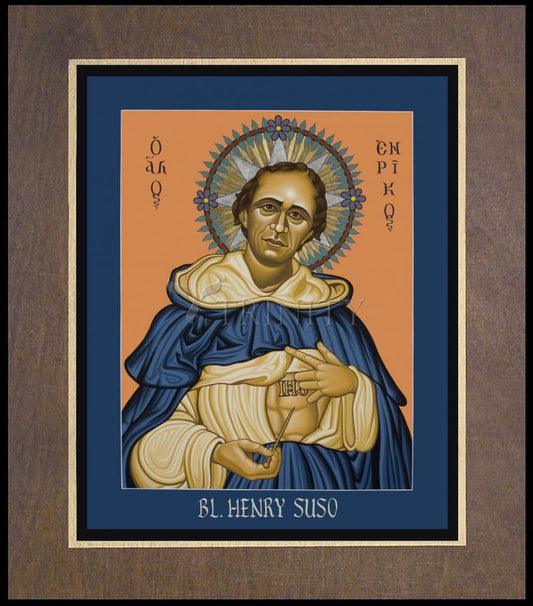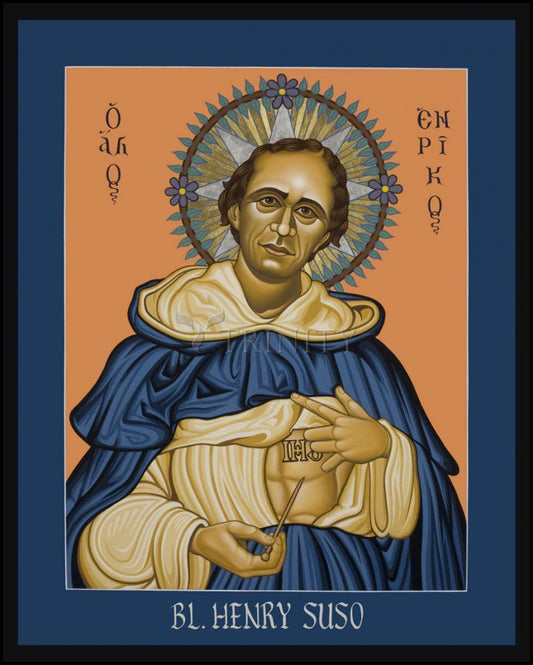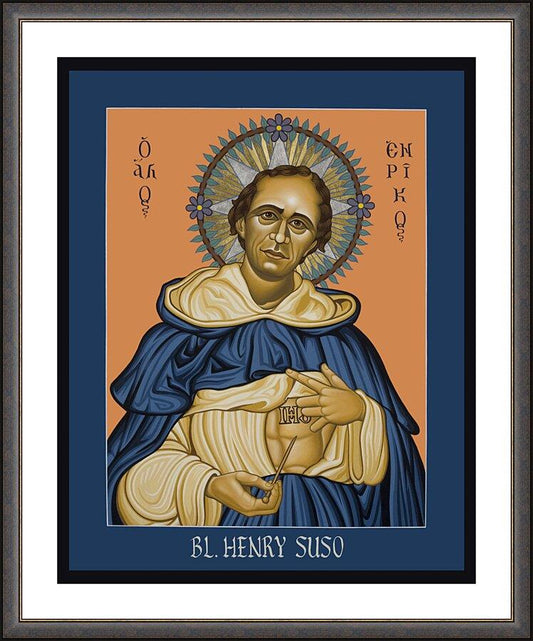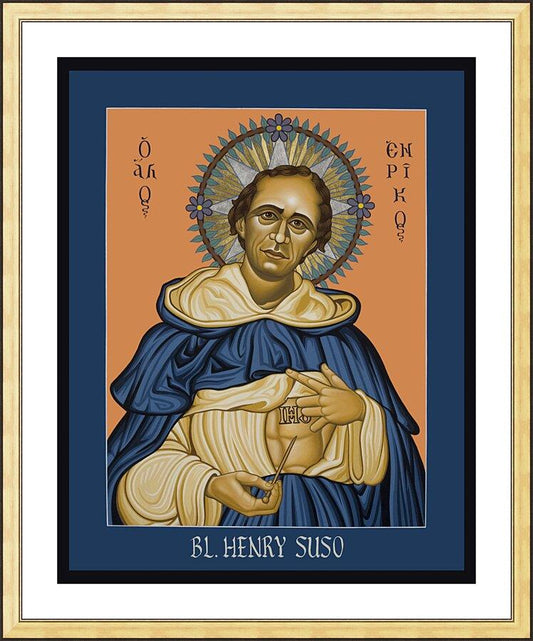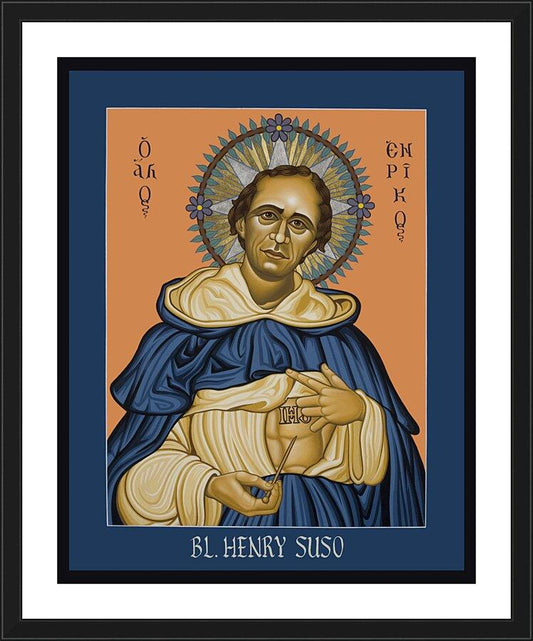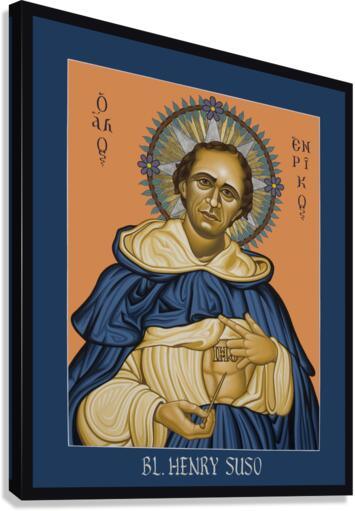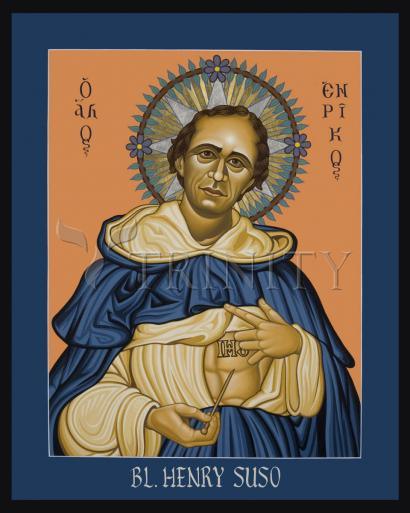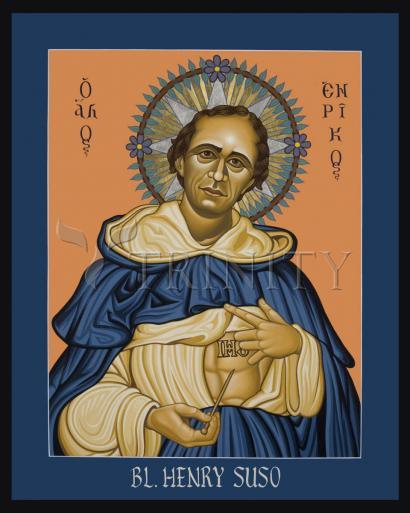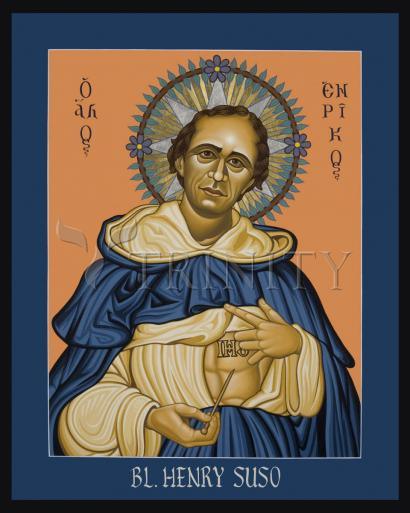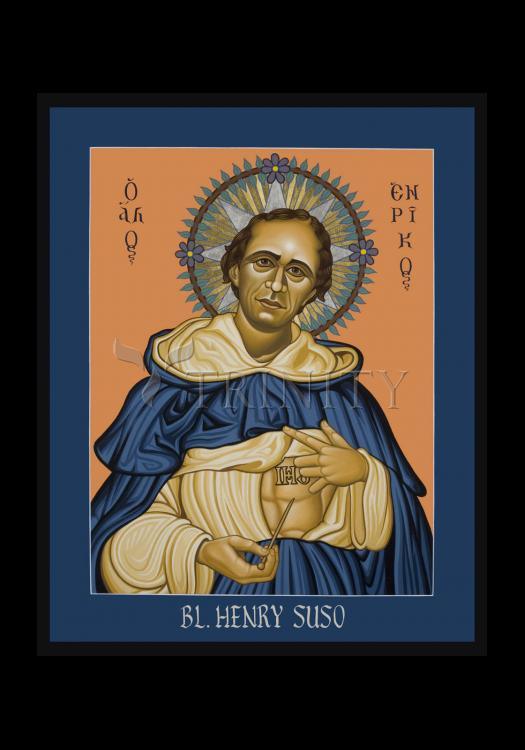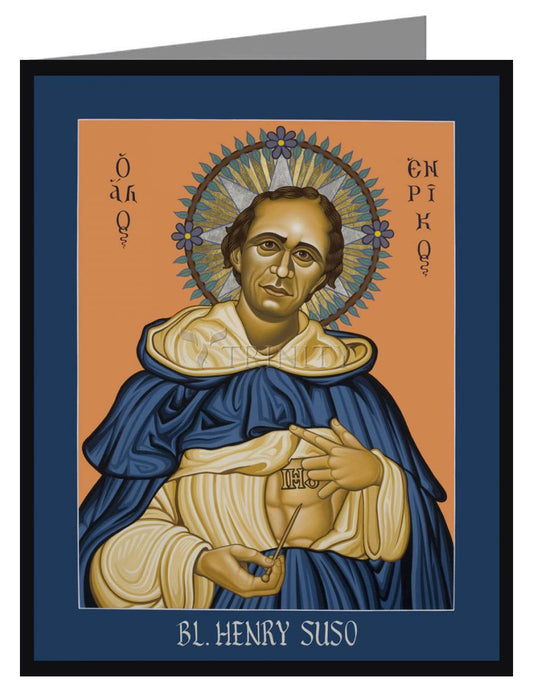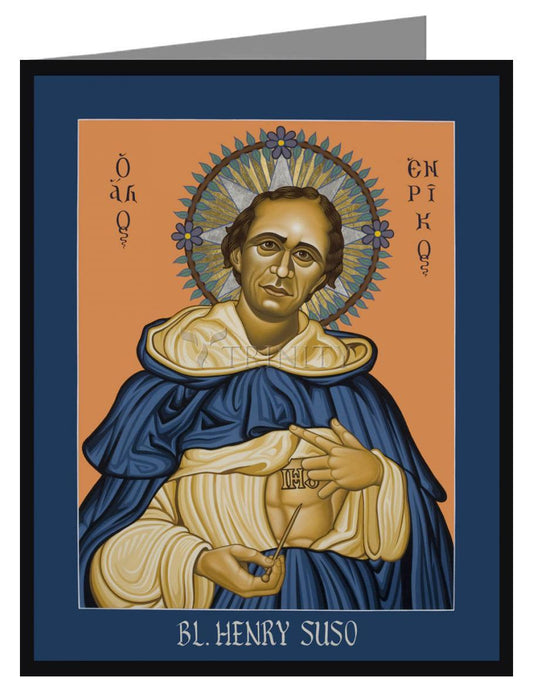His Life:
His father belonged to the noble family of Berg; his mother, a holy woman from whom he took his name, to a family of Sus (or Süs). When thirteen years of age he entered the Dominican convent at Constance, where he made his preparatory, philosophical, and theological studies.
From 1324 to 1327 he took a supplementary course in theology in the Dominican studium generale at Cologne, where he sat at the feet of Johann Eckhart, "the Master", and probably at the side of Tauler, both celebrated mystics. Returning to Constance, he was appointed to the office of lector, from which he seems to have been removed some time between 1329 and 1334. In the latter year he began his apostolic career. About 1343 he was elected prior of a convent, probably at Diessenhofen. Five years later he was sent from Constance to Ulm where he remained until his death.
Suso's life as a mystic began in his eighteenth year, when giving up his careless habits of the five preceding years, he made himself "the Servant of the Eternal Wisdom", which he identified with the Divine essence and, in a concrete form, with the personal Eternal Wisdom made man. Henceforth a burning love for the Eternal Wisdom dominated his thoughts and controlled his actions. He had frequent visions and ecstasies, practised severe austerities (which he prudently moderated in maturer years), and bore with rare patience corporal afflictions, bitter persecutions and grievous calumnies.
He became foremost among the Friends of God in the work of restoring religious observance in the cloisters. His influence was especially strong in many convents of women, particularly in the Dominican convent of Katherinenthal, a famous nursery of mysticism in the thirteenth and fourteenth centuries, and in that of Toss, where lived the mystic Elsbeth Stagel, who turned some of his Latin into German, collected and preserved most of his extant letters, and drew from him the history of his life which he himself afterwards developed and published.
In the world he was esteemed as a preacher, and was heard in the cities and towns of Swabia, Switzerland, Alsace, and the Netherlands. His apostolate, however, was not with the masses, but rather with individuals of all classes who were drawn to him by his singularly attractive personality, and to whom he became a personal director in the spiritual life.
It has often been incorrectly said that he established among the Friends of God a society which he called the Brotherhood of the Eternal Wisdom. The so-called Rule of the Brotherhood of the Eternal Wisdom is but a free translation of a chapter of his "Horologium Sapientiae", and did not make its appearance until the fifteenth century.
His Writings:
The first writing from the pen of Suso was the "Büchlein der Wahrheit", which he issued while a student at Cologne. Its doctrine was unfavorably criticized in some circles"very probably on account of its author's close relations with Eckhart, who had just been called upon to explain or to reject certain propositions"but it was found to be entirely orthodox.
As in this, so in his other writings Suso, while betraying Eckhart's influence, always avoided the errors of "the Master". The book was really written in part against the pantheistic teachings of the Beghards, and against the libertine teachings of the Brethren of the Free Spirit. Father Denifle considers it the most difficult "little book" among the writings of the German mystics.
Whereas in this book Suso speaks as a contemplative and to the intellect, in his next, "Das Büchlein der ewigen Weisheit", published early in 1328, he is eminently practical and speaks out of the fullness of his heart to "simple men who still have imperfections to be put off". Bihlmeyer accepts Denifle's judgment that it is the "most beautiful fruit of German mysticism", and places it next to the "Homilies" of St. Bernard, and the "Imitation of Christ" by Thomas a Kempis. In the second half of the fourteenth and in the fifteenth century there was no more widely read meditation book in the German language.
In 1334 Suso translated this work into Latin, but in doing so added considerably to its contents, and made of it an almost entirely new book, to which he gave the name "Horologium Sapientiae". Even more elevating than the original, finished in language, rich in figure, rhythmic in movement, it became a favorite book in the cloisters at the close of the Middle Ages, not only in Germany, but also in the Netherlands, France, Italy, and England.
To the same period of Suso's literary activity may belong "Das Minnebüchlein" but its authenticity is doubtful.
After retiring to Ulm Suso wrote the story of his inner life ("Vita" or "Leben Seuses"), revised the "Büchlein der Wahrheit", and the "Büchlein der ewigen Weisheit", all of which, together with eleven of his letters (the " Briefbüchlein"), and a prologue, he formed into one book known as the "Exemplar Seuses".
Besides the above-mentioned writings we have also five sermons by Suso and a collection of twenty-eight of his letters (Grosses Briefbuch), which may be found in Bihlmeyer's edition.
Suso is called by Wackernagel and others a "Minnesinger in prose and in the spiritual order." The mutual love of God and man which is his principal theme gives warmth and color to his style. He used the full and flexible Alamannian idiom with rare skill, and contributed much to the formation of good German prose, especially by giving new shades of meaning to words employed to describe inner sensations. His intellectual equipment was characteristic of the schoolmen of his age. In his doctrine there was never the least trace of an unorthodox tendency.
For centuries he exercised an influence upon spiritual writers. Among his readers and admirers were Thomas a Kempis and Bl. Peter Canisius.
Also called: Amandus, a name adopted in his writings.
Born: at Constance on March 21 about 1295, German mystic
Died: at Ulm, January 25 January, 1366
Declared Blessed: 1831 by Gregory XVI, who assigned his feast in the Dominican Order to 2 March.



